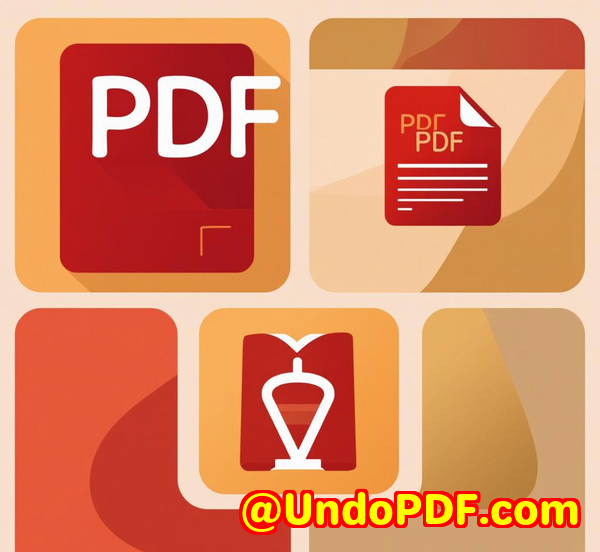Blackboard LMS Research Librarians Use VeryPDF DRM Protector to Secure PDF Archives of Academic Journals
Blackboard LMS Research Librarians Use VeryPDF DRM Protector to Secure PDF Archives of Academic Journals
Secure your academic PDF archives with VeryPDF DRM Protector integrated into Blackboard LMS and other systems, preventing unauthorized sharing.

Every week, I used to wrestle with the chaos of managing PDF archives of academic journals. As a research librarian, the constant worry that sensitive scholarly content could be downloaded, copied, or shared without permission kept me up at night. Students forwarding files to peers or accidentally exposing subscription-only content on public platforms was a nightmare. I knew I needed a solution that could protect our intellectual property, but most PDF tools were either clunky or lacked real-time protection across multiple systems.
Why I Chose VeryPDF DRM Protector
After weeks of research, I stumbled upon VeryPDF DRM Protector, a solution that promised seamless integration with our LMSBlackboardand other systems we relied on, like our CMS, CRM, and even cloud storage platforms. What really drew me in was the promise of dynamic watermarking, encryption, and full access control, all manageable from a single platform.
VeryPDF DRM Protector isn’t just another PDF lock software; it’s a robust digital rights management solution. It allows you to protect PDFs in real-time, with control over who sees what, when, and how. For research librarians and academic institutions, this is a game-changer.
Key Features That Made My Life Easier
1. Integration with LMS and CMS Platforms
One of the biggest headaches in academia is ensuring that digital content remains secure across multiple systems. VeryPDF DRM Protector integrates with LMS platforms like Blackboard, Moodle, and Canvas, as well as CMS systems such as WordPress, Joomla, and Drupal.
For us, this meant that PDFs uploaded to our Blackboard course sites were automatically encrypted and watermarked with user-specific identifiers. Students could view content without the risk of downloading or sharing it elsewhere.
I remember setting up a batch of 500 journal PDFs for a new research course. In less than an hour, everything was encrypted, access-limited, and dynamically watermarked. Other tools I had tried required manual processing or offered only static watermarks, which were easy to remove.
2. Dynamic Watermarking for Real-Time Protection
What truly impressed me was the dynamic watermarking feature. Every PDF displayed on a student’s screen was stamped with their username, date, time, and even IP address. This isn’t just cosmeticif someone tried to screenshot or share the PDF, the watermark made it immediately traceable.
I tested this by asking a colleague to attempt sharing a PDF outside our LMS. Within minutes, we could see that the watermark carried all necessary information to identify the source. The sense of security this provided to our library and faculty was invaluable.
3. Granular DRM Controls
VeryPDF DRM Protector offers over 20 DRM settings, giving precise control over document usage. You can:
-
Limit the number of devices a PDF can be opened on
-
Restrict printing and copying
-
Control offline access
-
Set expiration dates
-
Restrict access by IP or country
I set up an advanced access policy for a subscription-only journal archive. Only authorized faculty accounts could access PDFs, with device limits and a three-week expiry. The difference compared to our old system was night and dayno more worrying about leaks or unauthorized downloads.
4. Seamless Multi-System Integration
Our university also uses SharePoint, Salesforce CRM, and Google Drive. VeryPDF DRM Protector integrates with these platforms as well, meaning that regardless of where a PDF resides, it remains secure. For instance, when I uploaded research reports to Google Drive for collaborative faculty access, the documents were automatically protected. This level of automation saved countless hours.
5. User-Friendly API and SSO Integration
Another standout feature is its API-based integration. We could link VeryPDF DRM Protector to our Blackboard LMS and internal ERP system without custom coding. Single sign-on (SSO) was smooth, allowing users to access protected content without juggling additional logins. This was crucial for reducing friction in faculty and student adoption.
My Personal Experience
Before deploying VeryPDF DRM Protector, managing digital journal archives was exhausting. We constantly had to chase down unauthorized copies or manually restrict access. Since implementing the software, our workflows are smoother, and I finally feel in control. The automation alone reduced our content management hours by at least 40% weekly.
I vividly remember the moment I saw a student try to share a protected journal PDF outside our Blackboard LMS. The watermark instantly identified the source, and I could follow up with the student before the content spread. It was a “wow” moment that really proved the value of investing in proper DRM.
Compared to other solutions, VeryPDF DRM Protector is not bloated or difficult to navigate. Tools like Adobe DRM or third-party LMS plugins often lacked flexibility or required expensive licensing. VeryPDF combines ease of use, affordability, and robust protection in one platform.
Conclusion and Recommendation
For anyone managing large volumes of academic PDFswhether in a university library, research organisation, or training instituteVeryPDF DRM Protector is a must-have. It solves real problems: unauthorised sharing, intellectual property protection, and compliance with subscription licenses.
I’d highly recommend this to anyone who deals with sensitive PDF content. It’s intuitive, integrates seamlessly with your existing LMS and CMS, and gives you peace of mind that your documents are secure.
Start protecting your PDFs today and see the difference: https://drm.verypdf.com/
Custom Development Services by VeryPDF
VeryPDF offers bespoke development services tailored to your specific requirements. Whether you need PDF processing utilities for Windows, macOS, Linux, or server environments, or integration with custom applications, their team has the expertise.
They develop tools using Python, PHP, C/C++, Windows API, Linux, iOS, Android, JavaScript, C#, .NET, and HTML5, including Windows Virtual Printer Drivers for PDF, EMF, and image outputs. VeryPDF also provides solutions for printer job monitoring, system-wide and app-specific API hooks, OCR table recognition, barcode recognition, and report/document form generation.
Additionally, they offer cloud-based services for document conversion, viewing, digital signatures, DRM protection, font technologies, and document printing. For specialised technical needs, contact their support center: https://support.verypdf.com/.
FAQ
1. Can VeryPDF DRM Protector prevent screen sharing of PDF content?
Yes. It uses dynamic watermarking and screen-sharing controls to ensure that shared screens cannot expose your PDFs without traceability.
2. Which LMS platforms are compatible with VeryPDF DRM Protector?
It integrates seamlessly with Blackboard, Moodle, Canvas, and many other LMS systems, providing real-time PDF protection.
3. Can I control who can print or copy protected PDFs?
Absolutely. You can set granular permissions, including print limits, copy restrictions, offline access, and device-specific controls.
4. Is integration with existing ERP or CRM systems possible?
Yes. VeryPDF DRM Protector supports API integration with ERP, CRM, DMS, and eCommerce platforms, as well as SSO for user-friendly access.
5. How does dynamic watermarking help protect academic content?
Every PDF is stamped with user-specific information such as username, date, and IP address, making it traceable if shared or leaked.
Tags or Keywords
VeryPDF DRM Protector, Blackboard LMS, PDF protection, academic journal security, dynamic watermarking, DRM software, research librarian tools, PDF encryption, LMS integration, intellectual property protection



